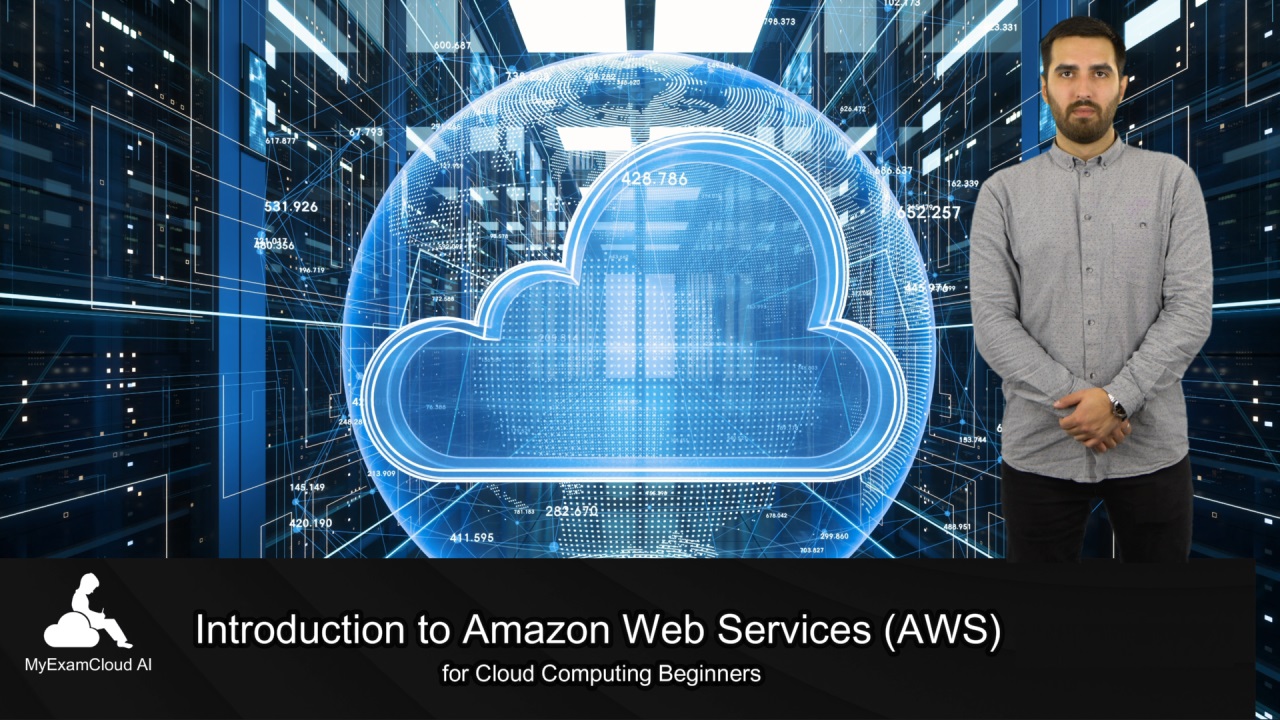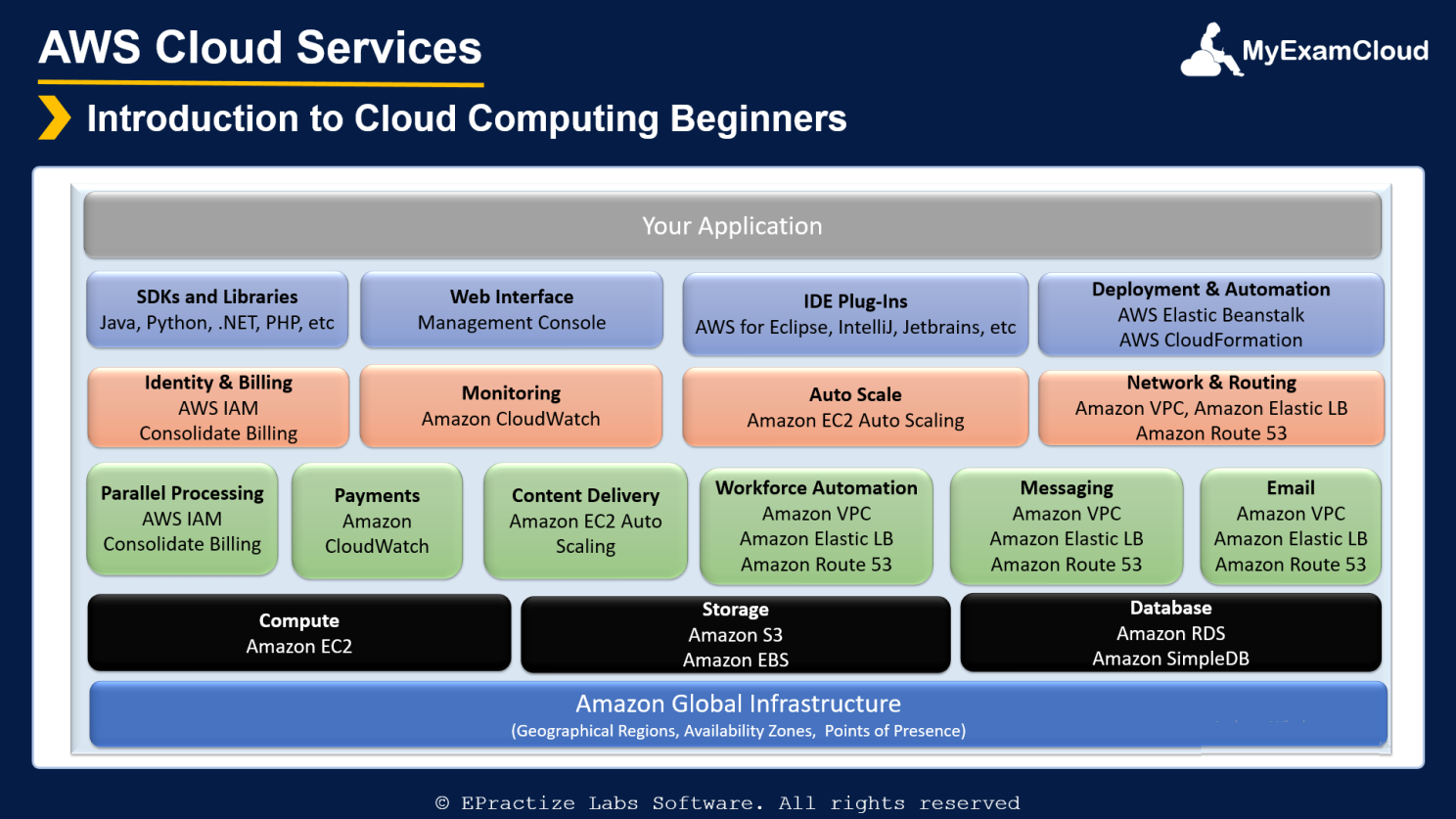
Introduction to Amazon Web Services (AWS) for Cloud Computing Beginners
Introduction to AWS
Amazon.com, the largest online store, was founded by Jeff Bezos in 1995. In 2006, AWS Cloud Services was launched, offering a collection of various web services that together make up a comprehensive cloud computing platform. With its pay-as-you-use model, AWS has become a popular choice among businesses and organizations.

AWS Global Infrastructure
One of the key strengths of AWS is its global infrastructure, with data centers located across different regions and Availability Zones (AZs). This allows for high availability and fault tolerance, ensuring minimal downtime and disruption.
AWS Cloud Services
The extensive range of services offered by AWS can be divided into categories such as compute, storage, database, networking and CDN, application, and deployment and management services. Each of these categories offers a variety of services to cater to different needs and use cases.
Amazon Elastic Compute Cloud (EC2)
EC2 is a web service that provides resizable compute capacity, allowing users to easily scale up or down according to their requirements. It offers complete control of resources, from the operating system (OS) to a wide range of instance types with varying CPU, memory, storage, and networking capacities.
Amazon Machine Image (AMI)
AMI provides a simple environment with tools to set up and launch instances. Users can choose from preconfigured AMIs or create their own custom ones for their specific needs.
Amazon Elastic Block Store (EBS)
EBS serves as a persistence block storage for EC2 and can also be used as the boot partition for EC2 instances. It allows data to persist independently from the life of an EC2 instance and is automatically replicated in a single AZ for high availability.
Amazon CloudWatch
CloudWatch is a powerful monitoring service that tracks the performance and health of all AWS resources and applications. It provides valuable insights into metrics such as CPU utilization, disk read and writes, and network metrics.
Amazon Elastic Load Balancer (ELB)
ELB is a service that evenly distributes incoming application traffic across multiple EC2 instances. It also detects unhealthy instances and automatically reroutes traffic to healthy ones, ensuring fault tolerance and high availability.
Amazon Elastic IP (EIP)
EIPs are static IP addresses that are associated with a customer account rather than a specific instance. This allows for location transparency and failure masking, as the IP address will remain the same even if the instance fails.
Amazon Simple Storage Service (S3)
S3 is a secure and highly scalable data storage infrastructure that can store and retrieve any amount of data at any time. It supports object sizes ranging from 1 byte to 5 terabytes and allows for replication and secure encryption for data protection.
Amazon Route53
Route53 is a Domain Name System (DNS) web service that routes end-users to internet applications, both within and outside of AWS. It maps URLs to IP addresses and utilizes edge locations for low latency and optimal performance.
Amazon CloudFront
CloudFront is a content delivery network (CDN) that efficiently delivers static and streaming content by utilizing global networks of edge locations. This allows for low latency and high performance when serving content to end-users.
Amazon Identity & Access Management (IAM)
IAM is a security service that helps users securely control access for various AWS services. It allows for easy assignment of users and groups with different security credentials, such as unique access keys or passwords.
Key Features of AWS
AWS provides numerous features that make it a popular choice for cloud computing, including high availability through AZs, auto-scaling and elasticity through CloudWatch, parallel processing with ELB, transparency with EIP, and security through encryption, IAM, and HTTPS access. Additionally, its support for fault tolerance and disaster recovery through replication, snapshots, and Virtual Private Cloud (VPC) capabilities, its low latency through edge locations and CDN, and its affordable pricing model (Pay-as-you-go) make it a cost-effective and reliable option for businesses.
Conclusion
For beginners looking to start their career in AWS Cloud Computing, obtaining the AWS Cloud Practitioner Certification is a great starting point. Utilizing resources such as MyExamCloud's AI-powered practice tests can also help in preparing for the certification and gaining a deeper understanding of AWS services. With its global infrastructure, wide range of services, and cost-effective pricing, AWS has solidified its position as a leading provider of cloud computing solutions.
| Author | JEE Ganesh | |
| Published | 1 year ago | |
| Category: | AWS | |
| HashTags | #Java #Python #AWS #Programming #CloudComputing #Software |


